Since 1815, the Gurkhas have been some of the finest troops Britain could call upon. They fought alongside British troops in many of the decisive wars that the country faced since the early nineteenth century.
In November 1814, a military conflict erupted between the British East India Company (EIC) and the Kingdom of Gorkha, present-day Republic of Nepal. During almost two years, both sides engaged in a conflict that would determine the political future of a significant part of the mountainous regions of the Indian subcontinent. The Anglo-Nepalese War witnessed the first intense use of Gorkhali soldiers by the EIC. In April 1815, roughly six months after the start of hostilities, the valour and resilience of the Gorkhali was already widely recognised amongst the British officers of the EIC. They called them “Gurkhas” (the name comes from the hill-town of “Gorkha” from which the Nepalese kingdom had expanded).
In that April, the first official result of this confidence on the Gurkhas was the creation of a battalion named the “Nasiri regiment” (“Nasiri” or “Nusseree” meaning loyal or friendly), which later became the “1st King George’s Own Gurkha Rifles” or the Malaun Regiment. The creation of this unit is the beginning of the history of the first Gurkha regiment associated with Britain.
Moreover, the regiment formed in 1815 was part of roughly 5,000 “Gurkhas” that joined the British side during the war. They were not only Gorkhalis but also Garhwalis, Kumaonis and other ethnicities from the northern Indian subcontinent. However, these groups eventually adopted the term Gurkha, already used by British officers, and became some of the most distinguished service members of the British Indian Army. During the conflict, other battalions were raised, including the Sirmoor Battalion, later known as the 2nd King Edward VII’s Own Gurkha Rifles, and the Kumaon Battalion, eventually known as the 3rd Queen Alexandra’s Own Gurkha Rifles.
In 1816, the Anglo-Nepalese War ended. The post-war negotiations resulted in the Treaty of Sugauli that transferred Nepalese territory to the EIC. The British also insisted on including a clause into the Treaty of Sugauli that would enable them to recruit Gurkhas. This clause would be the base of future agreements between Britain and Nepal concerning the recruitment of the Gurkhas. Roughly two years after their first battle alongside the EIC, the Gurkhas saw action during in the Pindaree (or Pindari) War of 1817, which was a military campaign aimed to punish the Pindari robber bands in India. However, the operations against the Pindari led to the Third Anglo-Maratha War when forces of the British East India Company advanced through Maratha territory. The eventual defeat of the Marathas cemented the British supremacy in India.
Nevertheless, other conflicts in the Indian subcontinent would witness the action of the Gurkhas. The Siege of Bharatpur of 1825-1826 and the First and Second Anglo-Sikh Wars in 1846 and 1848 were some of the first conflicts that the EIC employed its Gurkha forces in battle after the Anglo-Nepalese War. Reinforcing their reputation, the Gurkha regiment – by 1850 known as the 66th Goorkha Regiment of Bengal Native Infantry or Malaun Regiment – earned their first battle honour in their first engagement, the Bharatpur Siege. Additionally, the Gurkha battalions fought under Sir Harry Smith at the Battle of Aliwal, when the EIC obtained a significant victory, a turning point in the First Anglo-Sikh War.
When the Indian Rebellion of 1857 erupted, the Gurkhas remained loyal to the British. The resulting military campaigns of the Rebellion would require the capabilities offered by the Gurkha regiments. Thus, the Malaun Regiment and Sirmoor Battalion would be amongst the units employed during the conflict achieving praise for its actions. Lieutenant John Tytler would receive the first Victoria Cross awarded to a Gurkha officer, after his actions when leading troops in Choorpoorah. Additionally, the Sirmoor Battalion (known as the 8th Sirmoor Local Battalion) fought with notable courage during the conflict. Personnel from this unit were awarded 25 Indian Order of Merit medals for their actions during the four-month Siege of Delhi where they lost 327 of 490 men. While defending its position in the pro-British Raja Hindu Rao’s residence in Delhi, the Sirmoor Battalion fought alongside the 60th Rifles (also known as the King’s Royal Rifle Corps). Impressed by the resilience and commitment of the Gurkhas, the 60th Rifles pressured for the Sirmoor Battalion to become a Rifle Regiment which was accepted and came into force in 1858.
Following the Rebellion and the dissolution of the East India Company, the Gurkhas would be incorporated into the British Indian Army. Already highly regarded by British officers, the Gurkhas would quickly become a centrepiece of the new British Indian Army, as the Government in London became distrustful of many troops recruited in regions that sided against the Crown throughout the mutiny. In the following five decades, the Gurkha Regiments would see active service in the North-East and North-West Frontiers of British India, Afghanistan, Burma, Malaya, Cyprus, China – during the Boxer Rebellion of 1900 – and Tibet. Units were also deployed to Malta when the Russo-Turkish War of 1877-1878 broke out.
From 1901 to 1906 a series of changes to the nomenclature of the Gurkha regiments were implemented. The regiments were renumbered from the 1st to the 10th and reorganised as the “Gurkha Rifles” to avoid difference between units. By 1906, the regiments, collectively called as the Brigade of Gurkhas, were expanded to 20 battalions within the ten Regiments.
During the Great War, the Gurkha Battalions would expand to 33, and more than 200,000 Gurkhas served in the British Army. Throughout the conflict, the Regiments would suffer roughly 20,000 casualties and were awarded approximately 2,000 gallantry medals. The Gurkhas would serve in combat mainly in Mesopotamia, Turkey, Palestine and France.
In France, the Gurkhas were present in the battles of Loos (1915), Givenchy (part of the Winter Operations of 1914-1915) and Nueve Chapelle (1915). The planned British breakthrough at the Battle of Loos saw the Gurkhas fighting to the last man against the German defences. In Belgium, the units were present at the Second Battle of Ypres, participating in the subsidiary Battle of St. Julien. In December 1915, the Gurkha Regiments were sent to the Mesopotamia to support British forces in the ongoing campaign against the Ottoman Empire. In part, the decision to relocate the Gurkhas and the 3rd Lahore Division to another theatre of operations was due to the heavy losses of the British Indian Army during the winter months of the Western Front.
The Gurkhas saw active service in many battles in the Middle East, including the 1916 Allied Offensive against the Ottomans that resulted in the eventual capture of Baghdad in March 1917. In the following year, the 1st Battalion was present in the Battle of Megiddo. The victory at Megiddo allowed the advance of British Imperial forces to Damascus. Additionally, back in 1915, Gurkha regiments took part in the Gallipoli Campaign alongside Allied forces, including the Australian and New Zealand Army Corps (ANZAC). The Gurkhas were amongst the most involved in the Gallipoli Campaign; they were amongst the first to engage the Ottomans and the last to leave. During the Campaign, at Sari Bair, they were the only personnel to reach the main objective, the crest line, a position that allowed troops to look down on the Straits. The total Gurkha casualties during the Great War surpassed 20,000.
In the inter-war years, the Gurkhas were stationed in India and employed on the frontiers of the subcontinent. The North-West Frontier was considered a region of significant civil unrest and political instability, which required trained troops to keep local order. During these years, the Third Anglo-Afghan War would be the main conflict that the Gurkhas would be involved outside British India.
When the Second World War broke out in Europe, the British Indian Army had ten Gurkha Regiments, each with two battalions. The 20 inter-war battalions would be expanded to 35 after the Nepalese Government accepted a request made by Britain to increase the enlistment of recruits. Later in the war, the number of Gurkha Battalions would rise to 43. This expansion meant that all regiments received a third and fourth battalion, and some were having a fifth battalion. The inflow of recruit demanded the creation of new training centres in India, with at least ten established during the conflict.
During the Second World War, the total numbers of Gurkhas serving alongside Britain went beyond 120,000. When the Nepalese Government placed its Army at the disposal of the British Crown, the total number reached 250,000. Roughly 32,000 Gurkhas in British service were killed or wounded. The Gurkhas Battalions served in almost all war theatres, including North Africa, Greece, Italy, Syria and garrisoning India. Additionally, Gurkhas fought against the Empire of Japan in Burma, Northeast India, Malaya and Singapore. According to official statistics, the gallantry of the Gurkhas resulted in 2,734 bravery awards during the conflict.
In Burma, the Allied forces faced an intense Japanese offensive (December 1941). In February 1942, the British-Allied forces commenced a retreat to India. Gurkha Battalions fought intensively in 1944 during the Arakan Campaign and in the Japanese offensive against North-East India. The critical British victories at the Battles of Kohima and Imphal – between March and early July 1944 – counted with Gurkha battalions and pushed the Japanese away from India. In the following months, the battalions took part in the Allied offensive into Burma, which resulted in the liberation of the Burmese capital Rangoon by British troops in May 1945.
Soldiers from 1st Battalion The Royal Gurkha Rifles (1 RGR) carry out rehearsals ahead of tomorrow's Royal Wedding. The soldiers from 1 RGR have a close affiliation with HRH Prince Harry, having served alongside him in Afghanistan. #FridayFeeling pic.twitter.com/ucTM9vZoae
— British Army 🇬🇧 (@BritishArmy) May 18, 2018
Gurkha battalions were also present in North Africa, fighting the Italians and Germans since mid-1941 as part of the Indian Divisions within the Eighth Army. They fought in the Battle and Siege of Tobruk. Between October and November 1942, Gurkha battalions served at the Second Battle of El Alamein in which the Allied forces achieved a significant victory pushing the Axis troops away from Egypt. While the British-led troops pushed the Germans back to Libya, Gurkha units were reaffirming themselves as experts in smaller operations, which required hand-to-hand combat, overwhelming German positions and machine gun “nests”. In April 1943, as the Battle of Wadi Akariti unfold, personnel from the 2nd Gurkha Rifles led a successful assault against German defensive positions. The assault permitted the rest of the attacking troops to advance with relative safety. In the following weeks, Allied forces would advance quickly. In early May 1943, Tunis would fall.
For the Gurkhas in the area, the end of the North African Campaign was followed by the invasion of Italy. Amongst the many actions that the Gurkhas took part in Italy, the Battle of Monte Cassino is one that once again proved the quality of the Gurkhas. They were also present in the taking of Florence, at the assaults against the Gothic Line and the final Allied Spring Offensive in early 1945. It worth mentioning that Victoria Crosses were awarded to Gurkha personnel in every theatre of war that they served. Gurkhas were present in Indochina in the immediate aftermath of the Second World War, before leaving the region to the returning French authorities which would soon face an insurgency. Gurkha battalions were also in Greece after the end of the German occupation.
After the Second World War, the Indian Independence in 1947 required new arrangements concerning the Gurkhas and their links to the British and Indian armies. The Tripartite Agreement signed between the UK, India and Nepal settled that the ten Gurkha Regiments once part of the British Indian Army would face a split. Six regiments were transferred to the new Indian Army while the British Army would incorporate four (the 2nd, 6th, 7th and 10th). Additionally, the 4th Battalion of the 2nd Regiment would be transferred to the Indian Army as the 5th Battalion of the Gurkha Rifles.
In the following years, the Gurkhas would officially fight as part of the British Army and were based mainly in the Far East. During the Malayan Emergency (1948-1960), Gurkha battalions were employed extensively against insurgents of the Malayan National Liberation Army (MNLA), the military wing of the Malayan Communist Party. Roughly two years after the end of the Emergency, in January 1963, a military conflict between Indonesia and Malaysia erupted. The expected creation of the new British-backed “Federation of Malaysia” in the aftermath of the Emergency arose tensions with Indonesia culminating in a violent conflict known as the Borneo Confrontation (1963-1966). In both the Malayan Emergency and the Borneo Confrontation, Gurkhas were present throughout the hostilities and received awards for bravery, including the Victoria Cross. In the late 1960 and 1970s, Gurkha battalions were stationed in Hong Kong providing border security. Additionally, battalions alternated in duty tours between Britain, Brunei and Hong Kong and were sent to reinforce the British Sovereign Base of Dhekelia after the Turkish invasion of Cyprus in 1974.
Changing defence commitments following the 1966 Defence White Paper and its 1967 and 1968 supplements resulted in a reduction of total Gurkha personnel from 14,000 to approximately 8,000. Gurkha battalions were reduced from eight to five, and the Gurkha Parachute Company was disbanded.
The next major conflict the Gurkhas took part occurred in the South Atlantic in 1982. The Falklands War would start following the Argentine invasion and occupation of the Falkland Islands and South Georgia both British territories. The Military Junta that governed Argentina since 1976 tried to use the territorial dispute with Britain as a way to gather public support for the unpopular dictatorial regime. The Argentine Junta, led by Leopoldo Galtieri, expected the invasion to be a fait accompli, expecting no reaction from the UK beyond “diplomatic protests”. However, when the British Task Force set sail to the South Atlantic and started to arrive at Ascension Island to prepare for active service, it was clear for the Argentine Junta that they had underestimated the resolve of British Government led by Margaret Thatcher. The Junta also overestimated Argentina’s relevance to the United States’ foreign policy.

Present in the South Atlantic since the second week of hostilities, the Gurkhas were represented by the 7th Duke of Edinburgh’s Own Gurkha Rifles. The 7th Gurkhas’ primary action was at Mount William (Battle of Mount Tumbledown) on the night of 13-14 June. As the 2nd Scots Guards reached the high ground east of Tumbledown, the 7th Gurkhas were ordered to capture the sub-hill of Mount William (south of Tumbledown). During the battle, the Gurkhas suffered eight wounded from Argentine mortar fire. The British victory at Tumbledown opened the way to Stanley, and the Argentine forces surrendered shortly afterwards. It is worth mentioning that the reputation of the Gurkhas was known within the Argentine conscripts and rumours about the presence of Gurkhas in the area were enough to “scatter Argentine conscripts” as said by Lt. Col. Morgan in 1983. In the end, the Falklands War cost the lives of 255 British and 649 Argentine soldiers and 3 Falkland Islanders. The Gurkhas suffered one casualty in Goose Green and roughly 13 wounded. By the end of the war, the total numbers of Gurkhas under British service numbered approximately 8,300.
In 1994, the Gurkha Regiments of the British Army would face a reorganisation. The 2nd King Edward VII’s Own Gurkha Rifles (The Sirmoor Rifles) would be amalgamated with the 6th Queen Elizabeth’s Own Gurkha Rifles, 7th Duke of Edinburgh’s Own Gurkha Rifles, and 10th Princess Mary’s Own Gurkha Rifles to form the “Royal Gurkha Rifles”. In part, this change occurred due to the reduction in the size of the British forces. Before the amalgamation, the 6th Gurkha Rifles was formed by a single battalion since 1969, and the 7th Gurkha was facing a similar situation having its second battalion re-raised in 1981 and disbanded in 1986. The 10th Gurkha Rifles were a single battalion since 1968, and two battalions formed the 2nd Gurkha Rifles before being reduced to one in 1992. Therefore, the 1994 changes meant that the four rifle regiments would merge into one named the Royal Gurkha Rifles. In 1996, the 3rd Battalion was consolidated with the 2nd.
Five years later, in 1999, the Royal Gurkha Rifles took part in military operations in the Kosovo War. In that same year, they were also present in peacekeeping operations in East Timor and later in Sierra Leone. The British involvement in the Sierra Leone Civil War began in May 2000 under the codename Operation Palliser. Although the British forces operating in the conflict reached roughly 4,500, the Gurkha Rifles were not engaged in the hostilities. The Gurkhas were present in Sierra Leone in 2003 as part of peacekeeping missions and training exercises. It is worth mentioning that the Gurkhas were also involved in the Gulf War (1990-1991), sending support units.
The Royal Gurkha Rifles also served in 24 tours of duty in Afghanistan from October 2001 to October 2014 when the British Government announced the official end of combat operations in the war. In the 2000s the 2nd Battalion was deployed as the “Afghanistan Roulement Infantry Battalion”. The 1st Battalion served as part of the 52 Infantry Brigade. Gurkhas’s skills and abilities to build relationships with Afghans proved to extremely useful for the British and Allied forces during their presence in Afghanistan. In 2003, the Gurkhas participated in the Invasion of Iraq, providing mainly logistic and medical support to the Allied troops and being involved in the security of supply routes within Iraqi territory.
According to the Gurkha Brigade Association, “since 1997 Brigade units, from platoon/troop level and above, have deployed over one hundred times” demonstrating their relevance within the British Army. Additionally, 54 officers and soldier have been wounded and 15 were killed in action in the same period. Since 1997, the Gurkha Rifles have received more than 90 awards and many Commendations.
Currently, the number of Gurkhas serving in the British Army is approximately 3,400. In 2019, three years after the first plans were elaborated to expand the Gurkha Brigade with 800 new posts, the Ministry of Defence confirmed that the 3rd Battalion would be re-established. In January 2020, the 3rd Battalion was reformed and designated for “specialist infantry roles” (Specialised Infantry Battalion). The 1st Battalion of the Royal Gurkha Rifles is based at Shorncliffe as part of the 16 Air Assault Brigade. This formation is part of the British Army’s rapid response airborne reaction. Therefore, one Gurkha Battalion can be quickly deployed overseas.
The 2nd Battalion is stationed in Brunei as part of the British defence agreements with Brunei. During the Brunei Revolt of 1962 – when insurgents tried to overthrow the Sultan – the Gurkhas were deployed to aid the Sultan to quell the Rebellion. After the Brunei independence from Britain in 1984, the Sultan requested the continuation of the British military presence in the country. He offered to cover most of the costs of British units that would remain in the newly independent nation. Thus, since 1984, every five years, the two countries reaffirm the agreement that allows the presence of British troops in Brunei. The 1st and 2nd Infantry Battalions alternate between the UK and Brunei every three years. During their stay in South-East Asia, the battalion specialises in Jungle Warfare. When demanded, part of the Brunei battalion can be deployed elsewhere and generally engages in overseas excises in the Indo-Pacific area.
The Gurkha Brigade is also formed by the “10 The Queen’s Own Gurkha Logistic Regiment” (10 QOGLR) and two Gurkha Field Squadrons are part of the 36th Engineer Regiment; there are plans for two new Gurkha Engineer Squadrons to be formed by 2023. Additionally, there is the Queen’s Gurkha Signals, a regular formation of the Royal Corps Signals constituted by five squadrons. Therefore, the Royal Gurkha Rifles, the Queen’s Gurkha Signals and the Queen’s Own Gurkha Logistic Regiment currently form the ‘Gurkha Brigade’ of the British Army.
The Tripartite Agreement reached between the UK, Nepal and India established the rules of recruitment of the Gurkhas into British and Indian service. It is essential mentioning that the Gurkhas cannot be classified as mercenaries. As the Gurkha Brigade Association points out, the Protocol 1 of 1977 Additional to the 1949 Geneva Conventions is the only source of an internationally agreed definition of a “mercenary”. The Protocol definition excludes anyone who “is a member of the Armed Forces of a party to the conflict”. Therefore, the Gurkhas cannot be classified as mercenaries for they are an integral part of the British, Indian and Nepalese armies, having the same duties as other personnel. Lastly, the Nepalese Government do not see the Gurkhas as mercenaries, and the Tripartite Agreement rejects the term.
Despite their long history serving alongside Britain’s interests, the Gurkhas struggled to achieve rights to stay in Britain when retiring from the British Army. Traditionally, Gurkhas who had served their time (between 15 years to a maximum of 30) secured a relatively small pension and were sent back to Nepal. In 2007, Gurkhas that retired after 1997 won the right of equal pensions. Before the 2007 decision, Gurkhas received worse pensions when compared to their fellow British soldiers. On April 2009, retired Gurkhas won the right to live in Britain after a long political-judicial campaign. On May 2009, after a motion in the House of Commons, the Home Office announced that all Gurkha veterans with at least four years of service would be given the right to settle in the UK. The announcement ended a controversy generated by the British Government decision to restrict settling rights (citizenship entitlement) only to those Gurkhas that joined the Army after July 1997. However, the question of equal pensions for veterans that retired before 1997 still not completely solved, especially for those that settle in the UK where the living costs are higher than Nepal.

In 2015, the Brigade of Gurkhas celebrated 200 years of loyal and successful services to the Crown. During one the commemorative events, the Prince of Wales rightly declared that “the Gurkhas’ loyalty, coupled with the highest professional standards, has put them at the forefront of the British Army”. In 1983, answering a question about the Gurkha deployment to the Falklands, their commander, Lt. Colonel David Morgan declared that the Gurkhas are “bloody good soldiers”. Similarly, back in 1931, Sir Ralph Turner, a former Gurkha officer during the Great War, wrote his famous quote about the Gurkhas: “Bravest of the brave, most generous of the generous, never had country more faithful friends than you”. The United Kingdom has at its disposal one of the finest troops in the world. The least the British Government can do is to recognise their dedication, sacrifice and loyalty to the Crown, granting the Gurkhas honourable and equal rights.




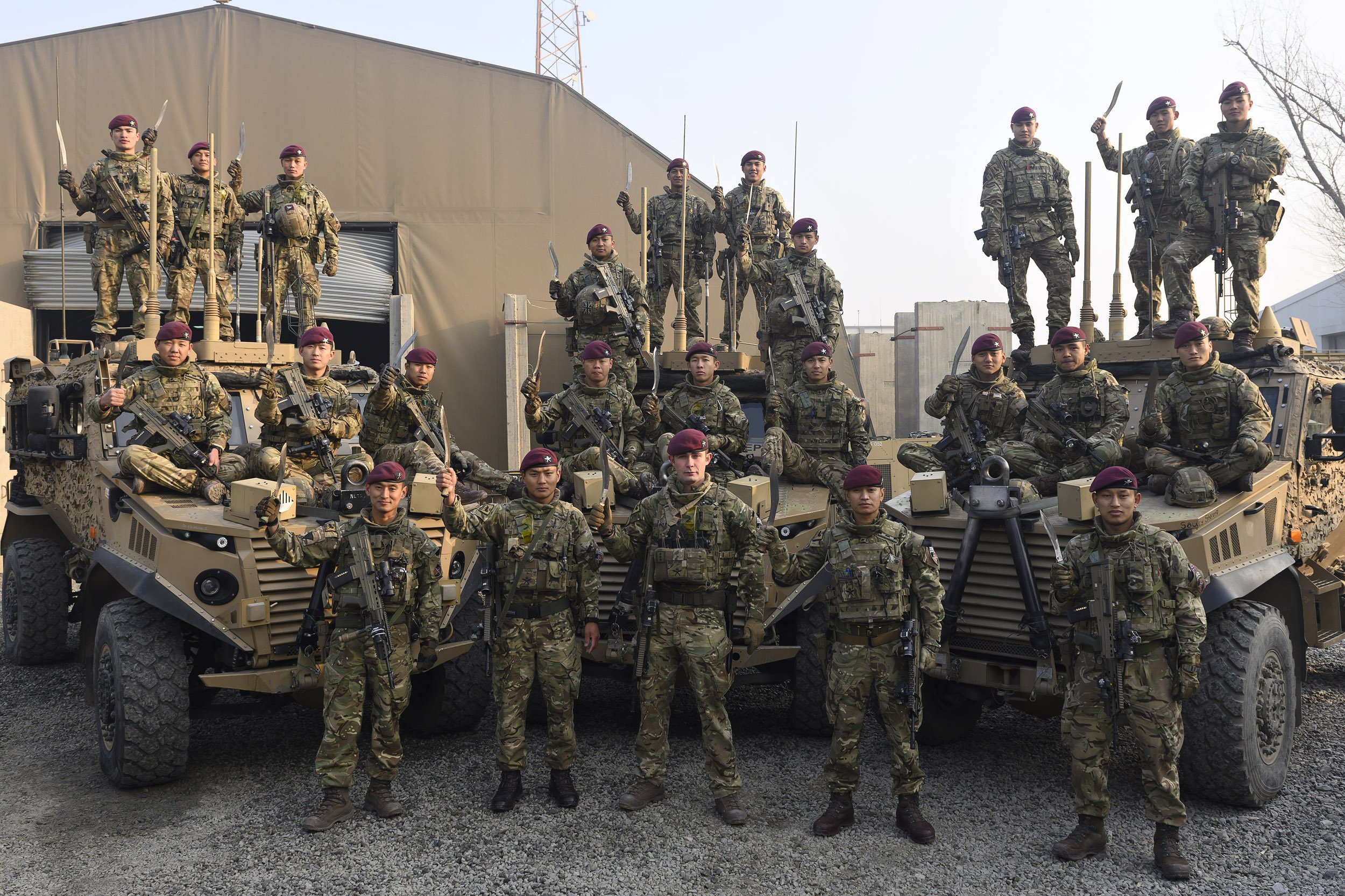
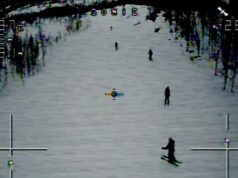
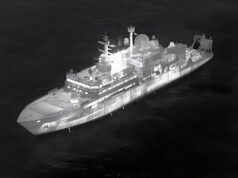
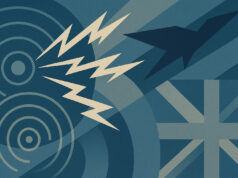
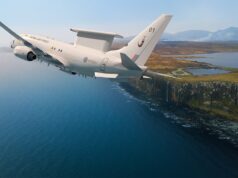
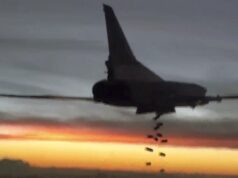
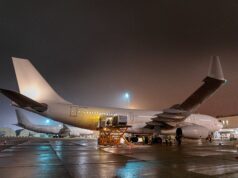

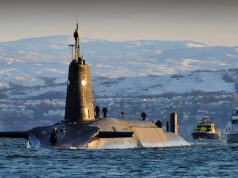



Fine soldiers indeed. As a rule, extremely fit lads.
I remember going through Phase 2 on platoon runs and slowing down for ‘CATTLE GRIIIIIDS’ & then watching these little f*ckers jump straight over them without breaking stride… and they were on their way back in! 🙂
I honestly believe any Gurkha serving 5 years or more should automatically get a British passport. They certainly deserve it.
I’d say the same about any Commonwealth members serving, too.
Fully agreed. Not sure about the 5 years, as it seems a little short, but certainly long serving ones should get full benefits of a UK citizen.
If they were to serve that in the uk they would be entitled to settled status and would then be allowed to apply for citizenship As that’s the law currently, however I think it should just be given to them as they tend to be very good troops , I have some reservations about giving it to all commonwealth who serve as some join and seem to spend there whole service medically down graded for “cold weather injuries” so I might put a rule that u have to serve 10 years and come out with exemplary record and have not spent years medically down graded with fake injuries
A fantastic article. Congratulations. And, I agree, all veterans and serving Gurkhas should be entitled to a British passport.
Without question.
I completely disagree. The article mentions the tripartite agreement; what would the Nepalis get in return for this? Basically a drain of their brightest and best. The right to remain has already resulted in multiple Gurkhas remaining in the UK, but this resulted in pensions no longer being invested in Nepal. Gurkhas have a long tradition of setting up schools, clinics etc which is no longer happening.
A secondary effect that has yet to be seen, is a drop off in recruiting. With fewer retired Gurkhas in Nepal, the image will gradually fade. Already the sons of Gurkhas in the UK can’t join the Brigade and whilst I served with a few in the Rifles, it is no longer so much of a family affair.
So in summary, the best thing for Nepal, for the British Army and for the Brigade of Gurkhas is in my opinion that these superb soldiers remain Nepali and are encouraged to return to Nepal post service (on a full British Army pension)
That should be their choice, and that should be freely given. It should be no different than anyone else in the UK choosing where to retire, anywhere in the world they like.
I understand that it would be good for the UK to give back to Nepal to thank the country for its willingness to give us these soldiers, but not by forcing them to return by refusing a passport.
I suspect even if they were given a passport and full British pension on retirement and then decided to retire in the UK, it wouldn’t stop most of their salary during their service flowing back to Napal to help their families.
Correct mate, spot on and relevent points which most havent thought about.
agree with other comments
these guys are worthy of more than our trust, we should repay their long term loyalty and provide them a path to citizenship
I would also like to see us do more for Nepal generally and perhaps use some of our DFID budget for the good of what is a very good partner
they also make a mean curry & of course they adopted the bagpipes. 😀
I don’t think that anybody that has served alongside them would begrudge them a thing.
Ayo Gorkhali!
Excellent article.
Could have also mentioned the 2 demonstration companies at Sandhurst and Brecon. I assume they are still active in supporting RMAS and the IBS.
Long may it continue. They should be given a fast-track to citizenship option if they want it.
One sad blot not of their making was the part they played in the Armritsar massacre although other elements of rhe British Indian Army were also involved. They of course did what the mad British OIC told them to do-open fire on an unarmed crowd!
In general they are amongst the best soldiers in the war. They were apparently unhappy not to have been involved in the worst off the Falklands fighting. Also I think it worth mentioning other Commonwealth citizens who identify with Britain and join the Army particularly from the Pacific Commonwealth. i think of Fiji for example and of course not to mention South Africans!
…best soldiers in the WORLD..
I will always have a soft spot for these guys. When based in Hong Kong a Sgt Gurkha from the Loggies taught me to drive. Great times where had bombing around the New Territories in a Lightweight land rover. I also worked with the Engineers occasionally as I was responsible for the UK forces ammunition facility on Stonecutters Island for the 2 years prior to the Handover. Again much fun was had doing Dems and explosives disposal.
I worked with the Indian Army Gurkhas for a short time in Sierra Leonne. They where part of the UN contingent. Best goat curries I have ever eaten!!
Curteous, well mannered, completely unflappable and as professional at their job as you can be, I felt priveledge as a matelot to have had the opportunity to have worked with them even if only for a short time.
The UK has also invested in housing, medical facilities, education etc. in Nepal for Gurkhas and their families living there.